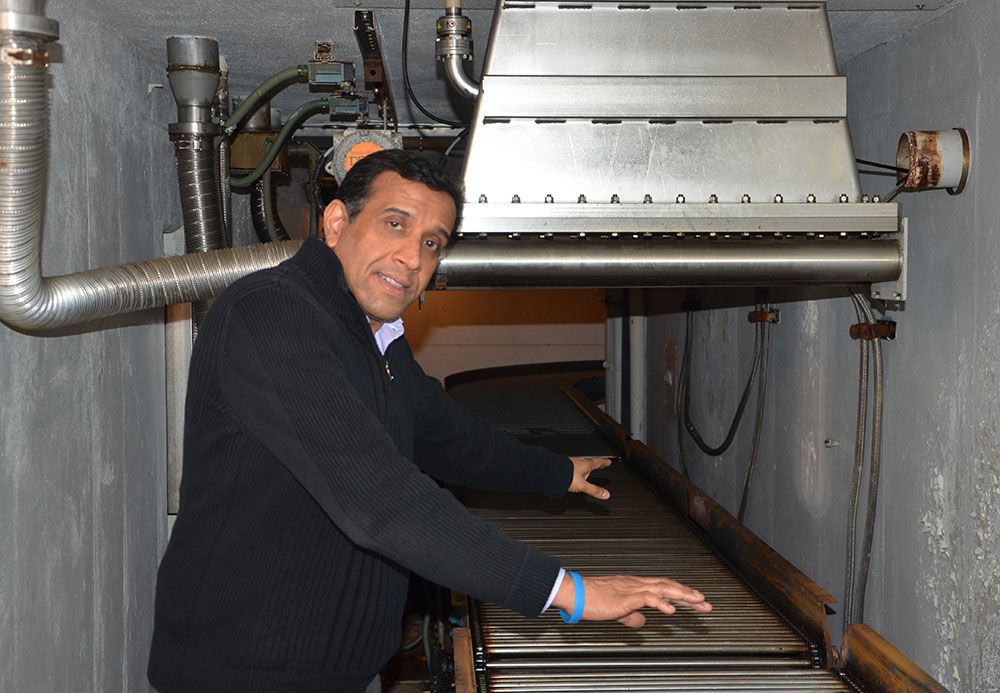
By the end of summer, more than one million 5-pound boxes of imported mangos will be treated for possible invasive pests by electron beam, which irradiates fruits and vegetables at low doses to sterilize them, said Dr. Suresh Pillai, director of the National Center for Electron Beam Research at Texas A&M University in College Station.
Pillai said a major retailer partnered with the eBeam center to utilize its on-campus technology to efficiently meet federal import sanitation requirements without damaging the fruit. The goal of the collaboration is to test eBeam’s use for large-scale sanitation of products in a real market environment.
The U.S. Department of Agriculture Animal and Plant Inspection Service’s restrictions require mangos from Mexico be treated to prevent introduction of insect pests, Pillai said. The USDA has approved the use of irradiation to treat imported fruits and vegetables to ensure invasive insects do not enter the country.
Prior to use of electron beam treatment, mangos were either dipped in hot water or exposed to gamma irradiation, Pillai said. However, this created a problem as mangos can’t be too ripe before dipping or the hot water will damage the fruit, and the gamma irradiation process is slow.
The eBeam center treated approximately 1.3 million pounds of Mexican mangos with USDA-prescribed doses of irradiation in 2017, Pillai said.
“Last year we tested the technology’s robustness and the product handling,” he said. “From that perspective, what we’ve done and are doing, is showing the world that this is a cost effective, environmentally friendly, green-technology that can be adopted anywhere.”
Electron beam technology has been used in the U.S. for decades at higher doses by the wire and cable industry, medical device industry and the ground beef industry. Low doses such as used on mangoes can not only eliminate insects and pests, but can also extend the shelf life by delaying maturation, Pillai said.
The diversity of uses has increased the technology’s interest globally, Pillai said. In addition to being the only such facility on a university campus in the world and a major research resource for faculty, the eBeam center at Texas A&M is a full scale commercial facility that allows private industry to test the technology spectrum of the technology’s commercial uses.
Pillai said the technology has proven very effective for treating high volumes of various products, but that tests, especially large-scale projects like this one, help researchers identify logistical challenges and strategies to optimize the facility to make eBeam systems more efficient and commercially viable.
“The biggest challenge we’ve encountered with this project is a pinch point in material handling,” he said. “The process is so quick that we realize that automation to load and unload boxes off the conveyor belt will be a game changer. Currently, the process is labor intensive and, therefore, the next step would be testing automation.”
Pillai said continued research and partnerships with private companies and public agencies will be instrumental in the spread of the technology and adoption within various industries into the future.
“There is no question about the equipment or the technology’s effectiveness, but there are still logistical challenges to be considered, especially when dealing with perishable items and staying in compliance with APHIS rules and guidelines,” he said. “But we see the benefits of eBeam technology. What we want to do is prove to the private industry that the technology is a viable investment and empower private industry and entrepreneurs to adopt the technology and expand its use around the world.”
Pillai said private companies are already showing increased interest in building similar eBeam facilities in the U.S. and Mexico to meet manufacturing and phytosanitary application needs. He said the potential for eBeam continues to be realized with each project, and that he is excited the research center at Texas A&M is spearheading its development and application.
“This is not a lab with little bench-top equipment,” he said. “This is a big-time commercial scale treatment technology. We like to say our mission is to clean, heal, feed and shape the world and beyond.”
This article by Adam Russell originally appeared in AgriLife Today.





